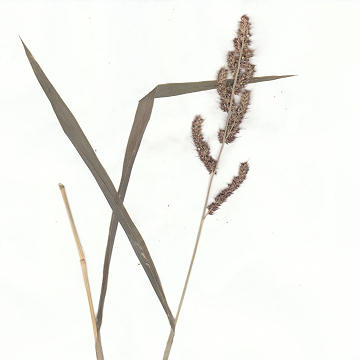

Echinochloa cruzgalli - (image 1 of 3)
Taxonomy
Family: Poaceae
Habitat
Wet ground, often in ditches, especially on high-nitrogen soils.
Associates
Tend to be weedy.
Distribution
Widespread in North America and Eurasia.
Morphology
Stout, often branching perennial. Leaves 5-30 mm wide, the sheaths glabrous. Inflorescence 10-25 cm long, erect, with 15-25 appressed or spreading branches 2-6 cm long, the longer ones branching again; spikelets to 2.5-4 mm; second glume and sterile lemma hairy or scabrous to subglabrous; fertile lemma 2.5-3.5 mm, about as long as wide, obtuse to broadly acute, the tip withering, thin, membranous, withering, and set off from the body by a line of minute hairs.
Notes
Flowers July to September
Wetland indicator: Facultative Wetland
It is debatable whether or not this species is native. Gleason & Cronquist consider it native to Eurasia and treat our native element as a separate species, E. muricata (P. Beauv.) Fernald, while Swink & Wilhelm treat them together and discuss the taxonomical differences.
The main difference seems to be the tip of the fertile lemma, which is abruptly narrowed to a firm, acuminate, persistent tip in E. muricata. In addition this species would normally have wide-spreading panicle branches and stout hairs on the veins of the second glume that are papillose at the base. It occurs on deep marshes and waste places from ME and Quebec west to Alberta and WA, south to FL, TX, CA, and northern Mexico, often overlapping the habitats of E. cruzgalli.
A form that sometimes escapes from cultivation is sometimes treated as a separate species, Echinochloa frumentacea (Roxb.) Link and is commonly known as Japanese Millet or Billion Dollar Grass.
References
Gleason, Henry A.
and A. Cronquist. 1991. Manual of Vascular Plants of Northeastern United States
and Adjacent Canada. Second Ed.
The New York Botanical Garden. Bronx, NY
Swink, F. and G. Wilhelm. 1994. Plants of the Chicago Region.
Indiana Academy of Science. The Morton Arboretum. Lisle, Illinois.
|
Michael Hough © 2010 |